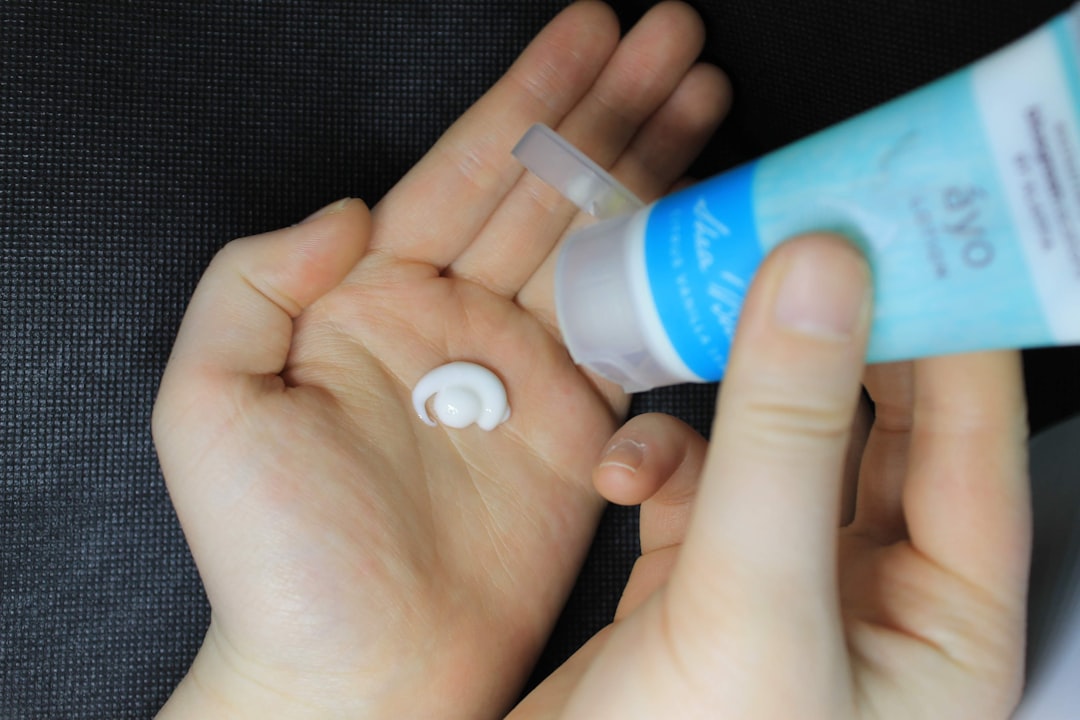Combination skin is a skin type that is characterized by having both oily and dry areas on the face. Typically, the T-zone (forehead, nose, and chin) tends to be oily, while the cheeks and areas around the eyes are dry. This can make finding the right skincare routine a bit challenging, as you need to address both oily and dry areas without exacerbating either condition. Understanding your skin type is crucial in order to choose the right products and treatments that will effectively address your specific concerns. It’s important to note that combination skin can also be sensitive, so it’s essential to use gentle products that won’t cause irritation or inflammation.
Combination skin can be influenced by a variety of factors, including genetics, hormones, and environmental conditions. Hormonal changes, such as those experienced during puberty, pregnancy, or menopause, can affect oil production and lead to changes in the skin’s texture and appearance. Additionally, environmental factors such as humidity, temperature, and pollution can also impact the skin’s oil production and hydration levels. Understanding these factors can help you better manage your combination skin and make informed decisions about your skincare routine. By choosing the right products and treatments, you can effectively balance the different needs of your skin and achieve a healthy, radiant complexion.
Summary
- Combination skin is characterized by having both oily and dry areas on the face, requiring a balanced skincare routine.
- When cleansing and exfoliating combination skin, it’s important to use gentle products that can effectively remove excess oil without over-drying the skin.
- Toning is essential for combination skin as it helps to balance the skin’s pH levels and remove any remaining impurities after cleansing.
- Moisturising combination skin requires a lightweight, non-comedogenic formula that can hydrate dry areas without adding excess oil to the T-zone.
- Treating specific concerns for combination skin, such as acne or fine lines, may require targeted products like spot treatments or serums.
Cleansing and Exfoliating
Cleansing is an essential step in any skincare routine, especially for those with combination skin. It’s important to use a gentle cleanser that effectively removes dirt, oil, and impurities without stripping the skin of its natural oils. Look for a cleanser that is formulated for combination skin and is free from harsh ingredients such as sulfates and alcohol. Cleansing twice a day, in the morning and evening, can help keep your skin clean and balanced. When it comes to exfoliating, it’s important to choose products that are gentle enough for both oily and dry areas. Exfoliating helps to remove dead skin cells, unclog pores, and improve the skin’s texture. However, over-exfoliating can lead to irritation and dryness, so it’s important to exfoliate no more than 2-3 times a week.
In addition to traditional exfoliators, chemical exfoliants such as AHAs (alpha hydroxy acids) and BHAs (beta hydroxy acids) can be effective for combination skin. AHAs, such as glycolic acid and lactic acid, help to exfoliate the skin’s surface and improve its overall texture. BHAs, such as salicylic acid, are oil-soluble and can penetrate deep into the pores to remove excess oil and unclog them. When using chemical exfoliants, it’s important to start with a lower concentration and gradually increase as your skin builds tolerance. By incorporating gentle cleansing and exfoliating into your skincare routine, you can effectively remove impurities and maintain a balanced complexion.
Toning
Toning is an often overlooked step in skincare routines, but it can be particularly beneficial for those with combination skin. A toner helps to remove any remaining traces of dirt or makeup after cleansing and can also help to balance the skin’s pH levels. Look for a toner that is alcohol-free and contains hydrating ingredients such as hyaluronic acid or glycerin to help soothe dry areas while controlling excess oil in the T-zone. Toners with natural ingredients such as witch hazel or tea tree oil can also help to clarify and purify the skin without causing dryness or irritation.
In addition to traditional toners, there are also exfoliating toners that contain ingredients such as AHAs or BHAs to further refine the skin’s texture and unclog pores. These exfoliating toners can be used 2-3 times a week after cleansing to help maintain clear and smooth skin. When applying toner, it’s best to use a cotton pad or apply it directly with clean hands, gently pressing it into the skin. By incorporating a toner into your skincare routine, you can effectively remove any remaining impurities while balancing the different needs of your combination skin.
Moisturising
Moisturising is a crucial step in any skincare routine, especially for those with combination skin. It’s important to use a lightweight, non-comedogenic moisturiser that provides hydration without clogging pores or causing excess oiliness. Look for a moisturiser that is formulated for combination skin and contains ingredients such as hyaluronic acid or squalane to hydrate dry areas while mattifying ingredients such as niacinamide or silica to control shine in the T-zone. Using a moisturiser with SPF can also help protect the skin from sun damage and premature ageing.
In addition to traditional moisturisers, there are also gel-based or water-based moisturisers that can be particularly beneficial for combination skin. These lightweight formulas provide hydration without feeling heavy or greasy on the skin. It’s important to apply moisturiser twice a day, in the morning and evening, to maintain the skin’s hydration levels and protect its barrier function. By choosing the right moisturiser for your combination skin, you can effectively hydrate dry areas while controlling excess oil in the T-zone for a balanced complexion.
Treating Specific Concerns
Combination skin can present specific concerns such as acne, blackheads, enlarged pores, or uneven texture. It’s important to choose targeted treatments that address these concerns without exacerbating other issues. For acne-prone areas in the T-zone, look for products containing ingredients such as salicylic acid or benzoyl peroxide to help control breakouts and reduce inflammation. For dry areas on the cheeks or around the eyes, consider using hydrating serums or creams containing ingredients such as ceramides or fatty acids to strengthen the skin’s barrier function and prevent moisture loss.
In addition to targeted treatments, using a weekly face mask can also help address specific concerns while providing an extra boost of hydration or purification. Clay masks can help to absorb excess oil and unclog pores in the T-zone, while hydrating masks can soothe and nourish dry areas on the cheeks. It’s important to choose masks that are suitable for combination skin and free from harsh ingredients that can cause irritation or dryness. By incorporating targeted treatments into your skincare routine, you can effectively address specific concerns while maintaining a balanced complexion.
Sun Protection
Sun protection is essential for all skin types, including combination skin. UV rays can cause premature ageing, pigmentation, and damage to the skin’s barrier function. It’s important to use a broad-spectrum sunscreen with an SPF of at least 30 every day, even on cloudy days or during the winter months. Look for sunscreens that are lightweight, non-comedogenic, and suitable for combination skin. Mineral sunscreens containing ingredients such as zinc oxide or titanium dioxide can provide effective protection without clogging pores or causing excess oiliness.
In addition to sunscreen, using other forms of sun protection such as wearing a wide-brimmed hat or seeking shade during peak sun hours can further protect your skin from UV damage. It’s also important to reapply sunscreen every 2 hours when outdoors or after swimming or sweating. By incorporating sun protection into your daily routine, you can effectively prevent sun damage and maintain a healthy complexion.
Professional Treatments
In addition to a regular skincare routine at home, professional treatments can also be beneficial for those with combination skin. Facials performed by licensed estheticians can help deep clean pores, exfoliate dead skin cells, and provide targeted treatments for specific concerns. Professional chemical peels containing AHAs or BHAs can further refine the skin’s texture and improve its overall appearance. It’s important to consult with a skincare professional to determine which treatments are best suited for your combination skin and address your specific concerns.
In addition to facials and chemical peels, other professional treatments such as microdermabrasion or laser therapy can also be effective for addressing concerns such as acne scars or pigmentation. These treatments should be performed by qualified professionals who can assess your skin’s needs and provide safe and effective solutions. By incorporating professional treatments into your skincare regimen, you can further enhance the health and appearance of your combination skin.
In conclusion, understanding your combination skin type is crucial in order to choose the right products and treatments that will effectively address your specific concerns. By incorporating gentle cleansing and exfoliating into your skincare routine, you can effectively remove impurities and maintain a balanced complexion. Toning helps to remove any remaining traces of dirt or makeup after cleansing and can also help to balance the skin’s pH levels. Moisturising is crucial for providing hydration without clogging pores or causing excess oiliness. Targeted treatments can address specific concerns such as acne or dryness without exacerbating other issues. Sun protection is essential for preventing sun damage and maintaining a healthy complexion. Professional treatments can further enhance the health and appearance of your combination skin. By following these guidelines and choosing the right products and treatments for your specific needs, you can achieve a healthy, radiant complexion despite having combination skin.
Discover the secrets to achieving a radiant complexion with our comprehensive guide to Combination Skin Care: A Step-by-Step Guide. In addition to mastering the art of caring for combination skin, you can also explore The Ultimate Guide to Glowing Skin: Tips and Tricks, which offers invaluable advice on enhancing your skin’s natural luminosity. Furthermore, if you’re looking to address dark spots and hyperpigmentation, be sure to check out How to Fade Dark Spots and Hyperpigmentation for expert tips and techniques. And for those with sensitive skin, our guide on Sensitive Skin Care: Gentle Routines and Products provides tailored recommendations to nurture and protect delicate skin. Elevate your skincare routine with these insightful resources and unlock your skin’s full potential.
FAQs
What is combination skin?
Combination skin is a skin type that is characterized by having both oily and dry areas on the face. Typically, the T-zone (forehead, nose, and chin) is oily, while the cheeks are dry.
What are the common issues faced by people with combination skin?
People with combination skin often struggle with managing both oily and dry areas on their face. They may experience acne and breakouts in the oily areas, while the dry areas may feel tight and flaky.
What is a good skincare routine for combination skin?
A good skincare routine for combination skin involves using gentle, non-drying cleansers, exfoliating regularly to remove dead skin cells, using a lightweight moisturizer, and applying sunscreen daily. It’s important to use products that balance the skin without over-drying or over-moisturizing.
How should I cleanse combination skin?
It’s best to use a gentle, non-drying cleanser that can effectively remove excess oil from the T-zone without stripping the dry areas of essential moisture. Avoid harsh cleansers that can further dry out the skin.
What type of moisturizer is best for combination skin?
For combination skin, a lightweight, non-comedogenic moisturizer is ideal. Look for products that are oil-free and hydrating, but won’t clog pores or make the skin feel greasy.
How often should I exfoliate combination skin?
Exfoliating 2-3 times a week is generally recommended for combination skin. This helps to remove dead skin cells and prevent clogged pores in the oily areas, while also smoothing and softening the dry areas.
Should I use different products for the oily and dry areas of my face?
It’s not necessary to use completely different products for the oily and dry areas of the face. Instead, look for products that are formulated to balance combination skin, such as oil-free moisturizers and gentle cleansers.




